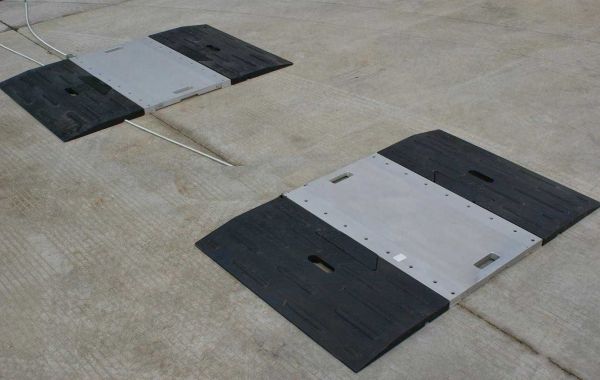Ensuring accurate and reliable weight measurements from your axle load scale requires a commitment to ongoing maintenance. Here's a breakdown of the typical maintenance tasks involved:
Inspection
- Regular Visual Inspection: Regularly inspect the entire axle load scale system for any signs of damage. This includes:
- Weighing Pads:Look for cracks, chips, or uneven wear on the surface of the weighing pads.
- Load Cells: While you can't directly see them, check for any loose mounting hardware associated with the load cells beneath each pad. Pay attention to any cables or connections leading from the load cells.
- Weighbridge (if applicable):If your axle load scale is a weighbridge system, inspect the pit area for cracks, water accumulation, or debris that could affect the stability of the platform.
- Electrical Components:Look for any signs of corrosion, fraying wires, or loose connections in electrical enclosures or junction boxes.
Cleaning
- Weighing Pad Cleaning: Maintain a clean surface on each weighing pad. Remove dirt, debris, or ice buildup that can interfere with accurate weight readings. Use appropriate cleaning methods based on the material of the weighing pads (typically concrete or steel). Avoid harsh chemicals or abrasive cleaning tools that could damage the pads.
- Weighbridge Pit Cleaning (if applicable):For weighbridge systems, regularly remove any water, debris, or build-up that accumulates within the pit. Standing water can affect the load cells and compromise the integrity of the system.
Calibration
- Regular Calibration: Similar to platform scales, axle load scales require periodic calibration to ensure their accuracy. The frequency of calibration depends on usage, industry regulations, and the specific accuracy requirements for your application. Generally, axle load scales are calibrated at least once a year, but more frequent calibration might be necessary for high-traffic weigh stations or those with strict weight enforcement needs. Consult the manufacturer's recommendations and any relevant industry regulations for the appropriate calibration schedule.
Additional Maintenance
- Software Updates:If your axle load scale has a digital display with software features for data recording or integration, ensure you keep the software updated with the latest versions from the manufacturer.
- Data Logging Review:Regularly review any data logs generated by the axle load scale system. Look for any unusual weight readings or trends that might indicate potential issues with the scale.
- Record Keeping: Maintain a logbook to document all maintenance activities performed on the axle load scale, including inspections, cleaning, calibrations, and software updates. This record-keeping helps track the scale's performance and ensures adherence to any calibration certificates.
By following these ongoing maintenance practices, you can extend the lifespan of your axle load scale, ensure its accuracy in weight enforcement or monitoring applications, and contribute to the smooth operation of your weigh station or facility.








